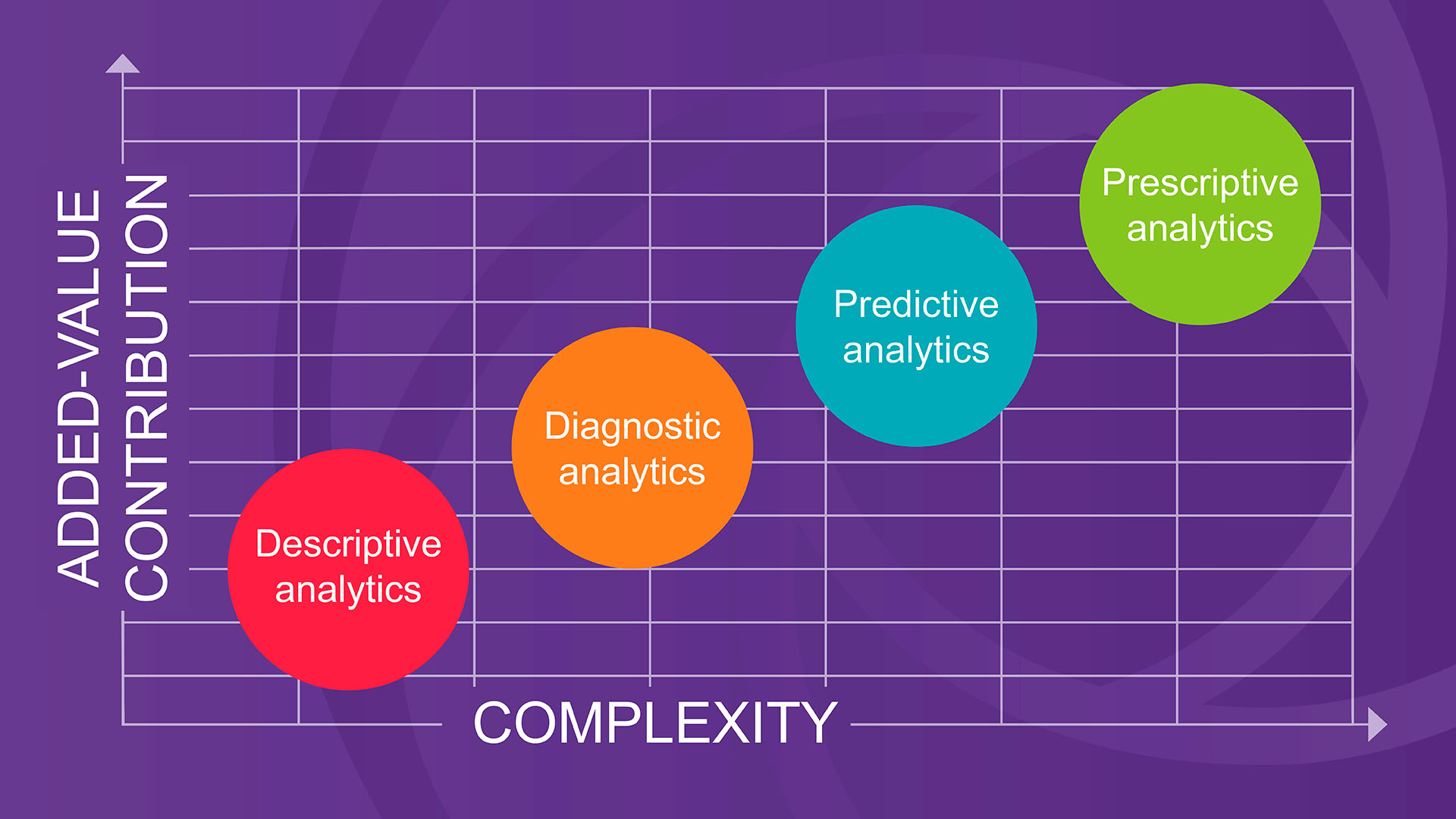-
Financial administration & outsourcing
Entrepreneurs who outsource financial administration reduce the number of administrative tasks and consequently have more time and space to focus on growth.
-
Financial insight
We help you turn financial data into valuable insights that support you in making well-founded decisions. In-depth analyses of your financial situation will help give you a better idea of where you stand and where the opportunities for growth lie, both in the short and long term.
-
Financial compliance
We make sure your company complies with financial legislation and regulations, with correct financial statements, tax reports and other obligations. From our global network, we support you in managing local and international tax risks.
-
Impact House by Grant Thornton
Building sustainability and social impact. That sounds good. But how do you go about it in the complex world of stakeholders, regulations and frameworks and changing demands from clients and society? How do you deal with important issues such as climate change and biodiversity loss?
-
Business risk services
Minimize risk, maximize predictability, and execution Good insights help you look further ahead and adapt faster. Whether you require outsourced or co-procured internal audit services and expertise to address a specific technology, cyber or regulatory challenge, we provide a turnkey and reliable solution.
-
Cyber risk services
What should I be doing first if my data has been kidnapped? Have I taken the right precautions for protecting my data or am I putting too much effort into just one of the risks? And how do I quickly detect intruders on my network? Good questions! We help you to answer these questions.
-
Deal advisory
What will the net proceeds be after the sale? How do I optimise the selling price of my business or the price of one of my business activities?
-
Forensic & integrity services
Do you require a fact finding investigation to help assess irregularities? Is it necessary to ascertain facts for litigation purposes?
-
Valuations
Independent and objective valuations tailored for mergers, acquisitions, and legal matters.
-
Auditing of annual accounts
You are answerable to others, such as shareholders and other stakeholders, with regard to your financial affairs. Financial information must therefore be reliable. What is more, you want to know how far you are progressing towards achieving your goals and what risks may apply.
-
IFRS services
Financial reporting in accordance with IFRS is a complex matter. Nowadays, an increasing number of international companies are becoming aware of the rules. But how do you apply them in practice?
-
ISAE & SOC Reporting
Our ISAE & SOC Reporting services provide independent and objective reports on the design, implementation and operational effectiveness of controls at service organizations.
-
International corporate tax
The Netherlands’ tax regime is highly dynamic. Rules and the administrative courts raise new challenges in fiscal considerations on a nearly daily basis, both nationally and internationally.
-
VAT advice
VAT is an exceptionally thorny issue, especially in major national and international activities. Filing cross-border returns, registering or making payments requires specialised knowledge. It is crucial to keep that knowledge up-to-date in order to respond to the dynamics of national and international legislation and regulation.
-
Customs
Importing/exporting goods to or from the European Union involves navigating complicated customs formalities. Failure to comply with these requirements usually results in delays. In addition, an excessively high rate of taxation or customs valuation for imports can cost you money.
-
Innovation & grants
Anyone who runs their own business sets themselves apart from the rest. Anyone who dares stick their neck out distinguishes themselves even more. That can be rather lucrative.
-
Tax technology
Driven by tax technology, we help you with your (most important) tax risks. Identify and manage your risks and become in control!
-
Transfer pricing
The increased attention for transfer pricing places greater demands on the internal organisation and on reporting.
-
Sustainable tax
In this rapidly changing world, it is increasingly important to consider environmental impact (in accordance with ESG), instead of limiting considerations to financial incentives. Multinational companies should review and potentially reconsider their tax strategy due to the constantly evolving social standards
-
Pillar Two
On 1 January 2024 the European Union will introduce a new tax law named “Pillar Two”. These new regulations will be applicable to groups with a turnover of more than EUR 750 million.
-
Cryptocurrency and digital assets
In the past decade, the utilization of blockchain and its adoption of a distributed ledger have proven their capacity to revolutionize the financial sector, inspiring numerous initiatives from businesses and entrepreneurs.
-
Streamlined Global Compliance
Large corporations with a presence in multiple jurisdictions face a number of compliance challenges. Not least of these are the varied and complex reporting and compliance requirements imposed by different countries. To overcome these challenges, Grant Thornton provides a solution to streamline the global compliance process by centralizing the delivery approach.
-
Private wealth services
Our Private Wealth specialists offer strategic and practical solutions. From tax advice to estate planning and financial scenarios, we make sure you make the right choices today, for tomorrow.
-
Corporate Law
From the general terms and conditions to the legal strategy, these matters need to be watertight. This provides assurance, and therefore peace of mind and room for growth. We will be pro-active and pragmatic in thinking along with you. We always like to look ahead and go the extra mile.
-
Employment Law
What obligations do you have with an employee on sick leave? How do you go about a reorganisation? As an entrepreneur, you want clear answers and practical solutions to your employment law questions. At Grant Thornton, we are there for you with clear advice, from contracts and terms of employment to complex matters such as dismissal or reorganisation.
-
Sustainable legal
At Grant Thornton, we help companies integrate sustainability into their business operations, with sustainable legal at the heart of our approach. We advise on ESG (Environmental, Social, Governance) legislation, and help draft sustainable contracts, implement HR policies, and carry out ESG due diligence in M&A transactions (Mergers and Acquisitions).
-
Pension advisory services
Are you, as business owner or employer, well prepared in terms of pension and other future facilities?
-
Global mobility services
How can you build and evolve a smart global mobility strategy, with policies and processes addressing the complex challenges of managing an international workforce?
-
Maritime sector
How can you continue to be a global leader? The Netherlands depends on innovation. It is our high-quality knowledge which leads the maritime sector to be of world class.
Data visualization step-by-step plan
During the whiteboard session, the current, most important Key Performance Indicators (KPIs) should be discussed. This will make the thread of the business strategy clear. The whiteboard session will also reveal the management's perspectives. The front page of the dashboard should display the core elements of your organization and thus your strategy at a glance. Therefore, this step is crucial.
Interviewing end-users
It is unnecessary to include all data in the analyses. The models should be developed to be "lean and mean" so that the dashboards remain fast and efficient. We conduct interviews with each end-user group to identify their information needs. This determines not only which data should be included in the analyses but also how the data models should be developed. In the case of many different user groups with completely different information needs, it may be better to develop data marts instead of directly extracting data from a data warehouse.
Analyses
Analysis is conducted in various stages. Therefore, it is advisable to implement the analyses in a logical order. The organization must be prepared for (more) data-driven management. When analyses are implemented at a high pace, there is a greater chance that the new analyses will not be adopted by employees. They are unsure of what actions to take with the new information. This leads to the analyses being parked and no longer used. The analyses should be a connecting factor between the business strategy and the actual execution.

1. Descriptive analyses
This process provides better insight into a company by dissecting it using historical data. Decision-makers can gain a holistic view of performance and trends upon which they can base their business strategy. These are basic analyses that can show, for example, the development of revenue and costs over a certain period. This form of analysis only displays the data as it comes from the data sources.
2. Diagnostic analyses
Diagnostic analysis is the process of using data to determine the causes of trends and correlations between variables. It can be seen as a logical next step after using descriptive analyses. It is meant to identify trends. For example, when selling prices increase and therefore revenue also increases, it may be interesting to analyze which part of the revenue increase is due to rising selling prices and which part is due to increasing/decreasing sales. It provides insight into the reason behind the revenue increase.
3. Predictive analyses
This is a form of analysis in which a prediction is made for the future using current and historical data. If a data quality issue arises, these analyses cannot be implemented. If errors are present in the data and a prediction is made on these errors (using regression algorithms), then the errors will be extrapolated. This creates errors on top of errors and the predictions become incorrect and inaccurate.
4. Prescriptive analyses
Prescriptive analysis is an analysis in which technology is used to help companies make better decisions by analyzing raw data. Prescriptive analyses take into account information about potential situations or scenarios, available resources, past performance, and current performance to recommend an action or strategy. This form of analysis is the opposite of descriptive analysis. Descriptive analysis uses historical data that has already occurred, while prescriptive analyses use historical data and predictive data to make the right decisions in the future.

